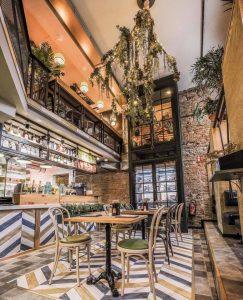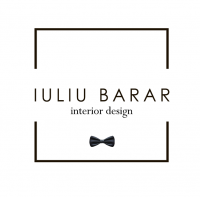 The wide-spread and easily accepted aesthetic appeal of objects with perfection tends to overshadow the potential aesthetic value of imperfect objects that are considered to be defective or deficient. This not only impoverishes our aesthetic lives but also leads to some serious environmental and social consequences. I think that Industrial style emerged out of the need to cultivate an aesthetic sensibility to appreciate imperfection in our everyday experience.
The wide-spread and easily accepted aesthetic appeal of objects with perfection tends to overshadow the potential aesthetic value of imperfect objects that are considered to be defective or deficient. This not only impoverishes our aesthetic lives but also leads to some serious environmental and social consequences. I think that Industrial style emerged out of the need to cultivate an aesthetic sensibility to appreciate imperfection in our everyday experience.
Baring it all takes courage and style, and modern industrial interior design is about exposing all that lies beneath to achieve raw, edgy style. What other styles are trying hard to hide, industrial design boldly puts on display. Structural elements are turned into showpieces, achieving a look that seems unfinished, yet cohesive and chic. I find it an interesting opportunity to juxtapose the raw with the refined, the sleek and modern with the vintage and classic, to combine textures and materials, to create individually designed art pieces out of the most common elements, as light fixtures for example. Interior lighting is a challenging aspect in every project, but in this style approach, it can be solved graciously by using individually designed floor lamps and pendants for focused lighting on points of interest.
While industrial interior design ideas tend to be minimalist, there is a lot of room for creating drama by contrasting a delightful textural interplay of grainy, earthy wood and smooth, lustrous metal. Textures are very important in the Industrial style as the colour palette is very neutral. Form and function are both equally important considerations. The furniture and accessories define most spaces and the purpose they serve. There is a lot of thought into every little detail.
If there were one surface in such spaces that could be considered an industrial interior design definition, it would be the ceiling. Bare beams, visible ductwork and pipes add interest and a new visual dimension to a surface that is as good as invisible in mostly all other design styles. Leaving exposed structural and mechanical elements that other styles invariably conceal has been the boldest move the design world has seen in a while.
Somehow, Industrial design philosophy tends to remind me of a much older eastern philosophy,
the Japanese aesthetic of Wabi Sabi, the art of finding beauty in imperfections. Initially introduced as an alternative to the prevailing taste for opulence and luxury, Wabi aesthetics also celebrates irregularity, rough surface, asymmetry and places value on simplicity, uncluttered, underplayed and modest living, the key to acing which is authenticity. This wonderful concept celebrates the beauty that comes with age. Scratches and cracks that are a symbol of passing time, weather, and loving use are a profound part of this unique idea. It drifts away from the conventional ways of decorating and seeks to accept asymmetry, modesty, and simplicity.
We’re all living in a “Limitless” world. We’ve collectively moved away from thinking about perfection in ethical, moral, aesthetic or social terms, toward the more limited concept of self-perfection — the attainment of a personal competitive edge. The Imperfectionist aesthetics of Industrial design is helpful in responding to these sociological consequences of perfectionism.
Particularly in this light, the aesthetics of imperfections found in Industrial Design offers one strategy for developing a capacity to appreciate imperfection, incompleteness, and defects. However, developing such aesthetic capacity encourages open-mindedness and receptivity in appreciating something on its own terms while enhancing the power of imagination. Rather than imposing a predetermined idea of what beauty has to be, we are letting the object in various forms speak to us, even if at first it may defy our usual expectations of beauty.

Leave a Reply